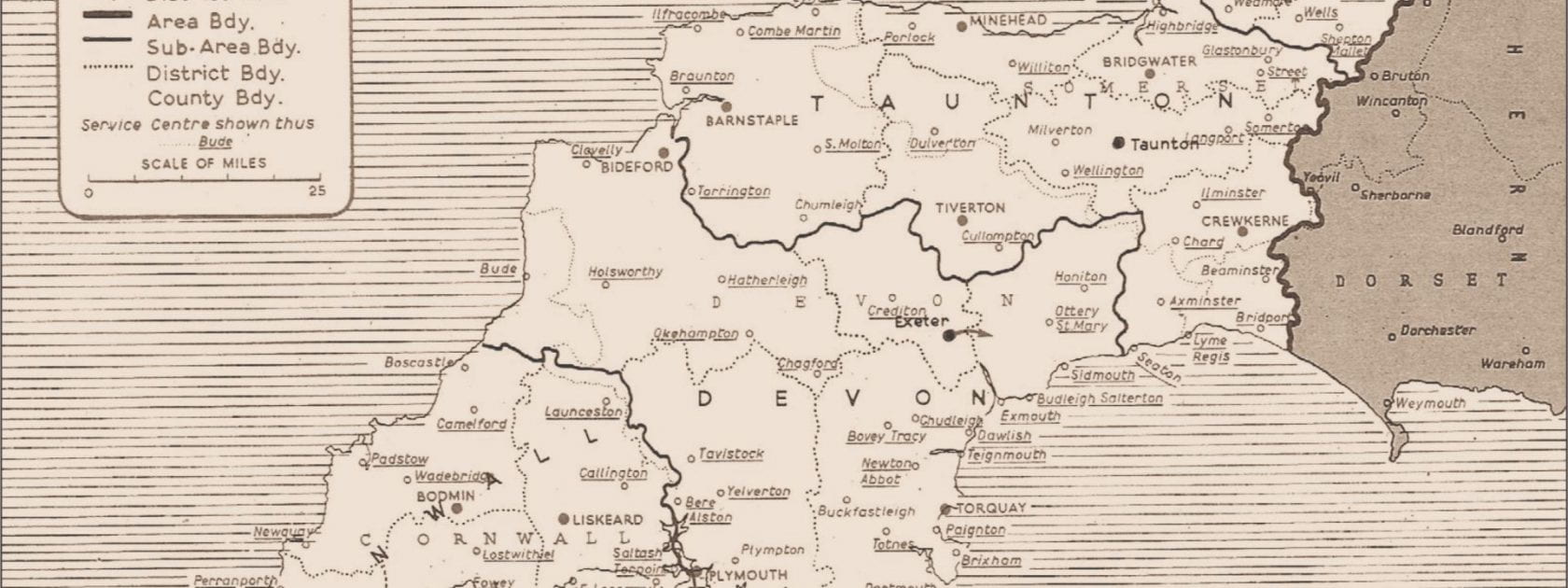For the period before state intervention, Garcke’s Manual of Electricity Undertakings, first published in 1896, is the indispensable source. This annual volume lists all municipal and company electricity and tramway systems in comprehensive detail. Technical information on the generating and distribution systems is noted for each undertaking, as well as statistics on sales, revenue and expenditure. There are also full details of personnel and company directors. Garcke also covers many of the non-statutory companies which were often significant in rural areas.
The contents of the Annual Reports of the Electricity Commissioners (1st, 1920-21 – 23rd, 1947-48) highlight the role of state intervention during this period and reflect the power of the Electricity (Supply) Act 1919. Under this legislation all power station and transmission line construction required consent of the Commissioners. Loans for local authority electricity undertakings, extensions of areas and transfers of ownership all required approval from London. Even the payment of subscriptions to associations such as the British Electrical Development Association and the Incorporated Municipal Electrical Association had to have the Commissioners’ consent. The detailed supervision of expenditure also included the purchase of proceedings of conferences or meetings and the expenses of members and officers attending such meetings.
The Engineering and Financial Statistics, also published by the Electricity Commissioners, were equally detailed. Local authorities and companies are separately listed with detailed tabulations of generating equipment, fuel consumption, output as well as sales (by type). Such data provide effective evidence on the scale and depth of electrification. The financial statistics cover revenue, expenditure and capital investment.
The Electricity Commissioners also published more specialised reports on plans for integrating local systems which formed the basis for the 132kv grid developed from 1927. All the publications of the Electricity Commissioners were issued under the authority of the Minister of Transport.[38] They were, however, Non-Parliamentary Publications of HMSO and consequently were not always acquired by libraries at the time.
The Annual Reports of the Central Electricity Board from 1929 to 1947 contain, especially in the earlier years, comprehensive details of the progress of constructing the transmission grid. CEB reports were privately published and are rare items in library collections.
Another source of local detail for the interwar period are planning reports prepared for local authority districts. There are two notable examples for Somerset: The Bristol and Bath Regional Planning Scheme (University of Liverpool Press/Hodder & Stoughton, 1930) and Somerset Regional Report: A survey and a plan (University of London Press, 1934). Both studies have beautifully coloured maps of the electricity supply areas in very fine detail.
After nationalisation, details of the electricity supply industry become more accessible, although in some points less comprehensive. For the generating and transmission sector, the Annual Reports and Accounts of the British Electricity Authority (1948-1949), Central Electricity Authority (1955-57)[39] and the Central Electricity Generating Board (1958-1989) contain useful data. These reports were all published as House of Commons sessional papers until 1971-72. Thereafter they were no longer published by HMSO and became increasingly glossy in appearance and content. From 1964 many details, previously available in the Annual Reports were published in the CEGB Statistical Yearbook. This was not published by HMSO and is comparatively rare.
The South Western Electricity Board annual reports and accounts were also published as House of Commons sessional papers until 1971-72. A detailed chronology of the SWEB activities by Peter Lamb (Histelec Supplement 28) is a useful guide to the contents of the annual reports.
From 1958-59 the Electricity Council, created to provide more linkages and coordination beyond the national and regional bodies, also published annual reports and statistical compilations. The Handbook of Electricity Supply Statistics published at intervals between 1966 and 1989 includes helpful summaries. Electricity Supply in Great Britain: A Chronology, also published in various editions, is especially useful for details of legislation and major events, especially technical changes from Michael Faraday’s fundamental discoveries of 1831.
In the postwar period the Electricity Supply Handbook (published annually by the Electrical Times from 1947) is a very useful compendium of facts, figures and personnel in the industry. The detailed maps of the grid system are especially important. Like many annual reference works of its type, these volumes are quite scarce.
Before privatization of the electricity supply industry in 1990, the area boards had retained most of the basic records of the pre-1948 undertakings. Since that time such archival materials have been dispersed or in some cases lost.
Two collections have materials relevant to electrification in South West England:
In Manchester, the Museum of Science and Industry has the records of the former Electricity Council. These include reports of the Electricity Commissioners, the Central Electricity Board, all of the organisations after 1948, as well as a set of Garcke’s Manual.
In Bristol, the Western Power Electricity Historical Society has a museum and extensive archival collection. The Society began in 1994 when employees of the former SWEB began salvaging records of all the former undertakings in the region. A set of Garcke’s Manual is a valuable part of the collection for research beyond the South West. The Society has been very active in publishing articles of wide interest and has a particularly effective and comprehensive website at www.wpehs.org.uk
[38] See Annual catalogues of British government publications 1920-1970 (Bishop’s Stortford: Chadwyck-Healey. 1974). [39] The change of title resulted from the formation of the autonomous South of Scotland Electricity Board from 1 April 1955.


